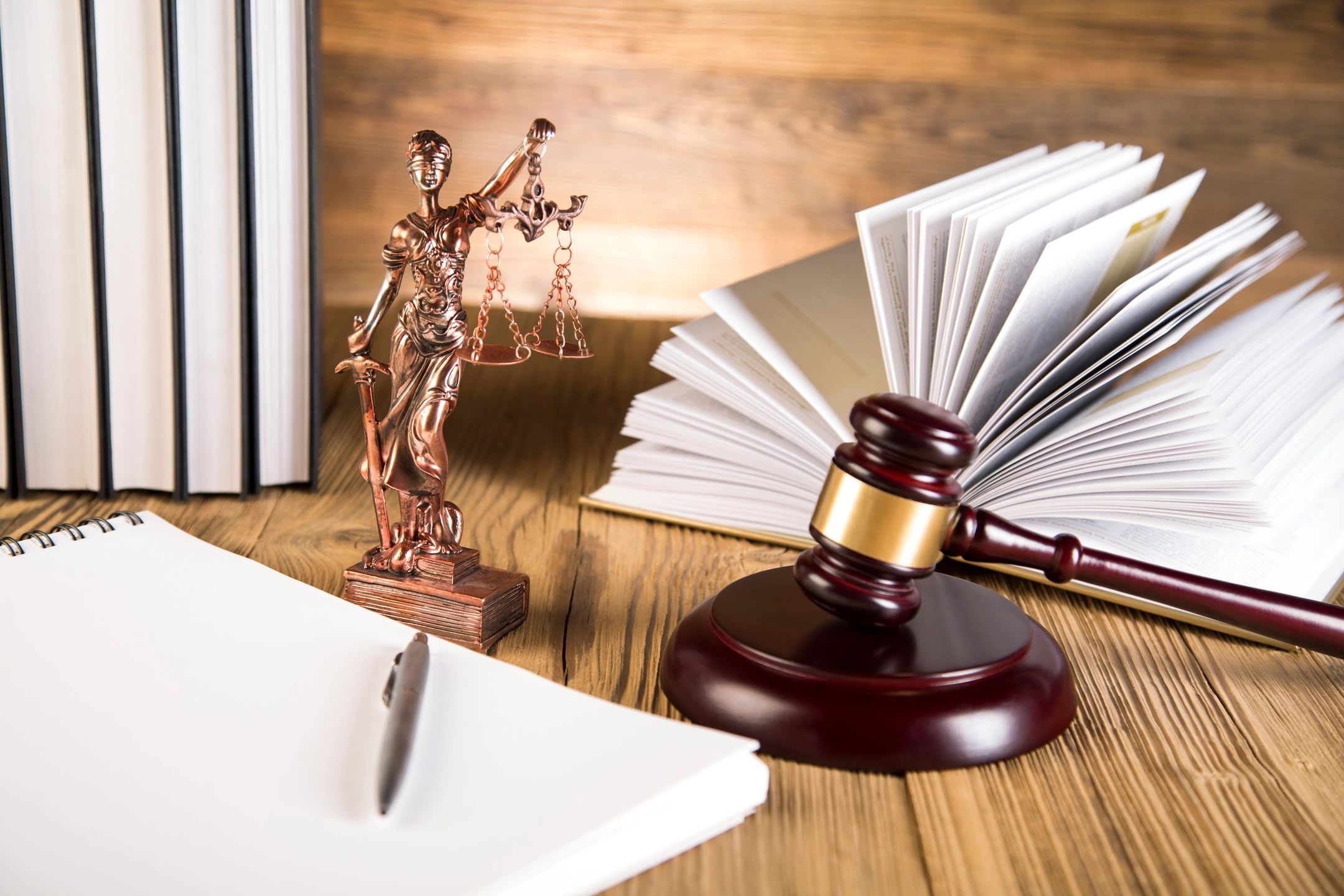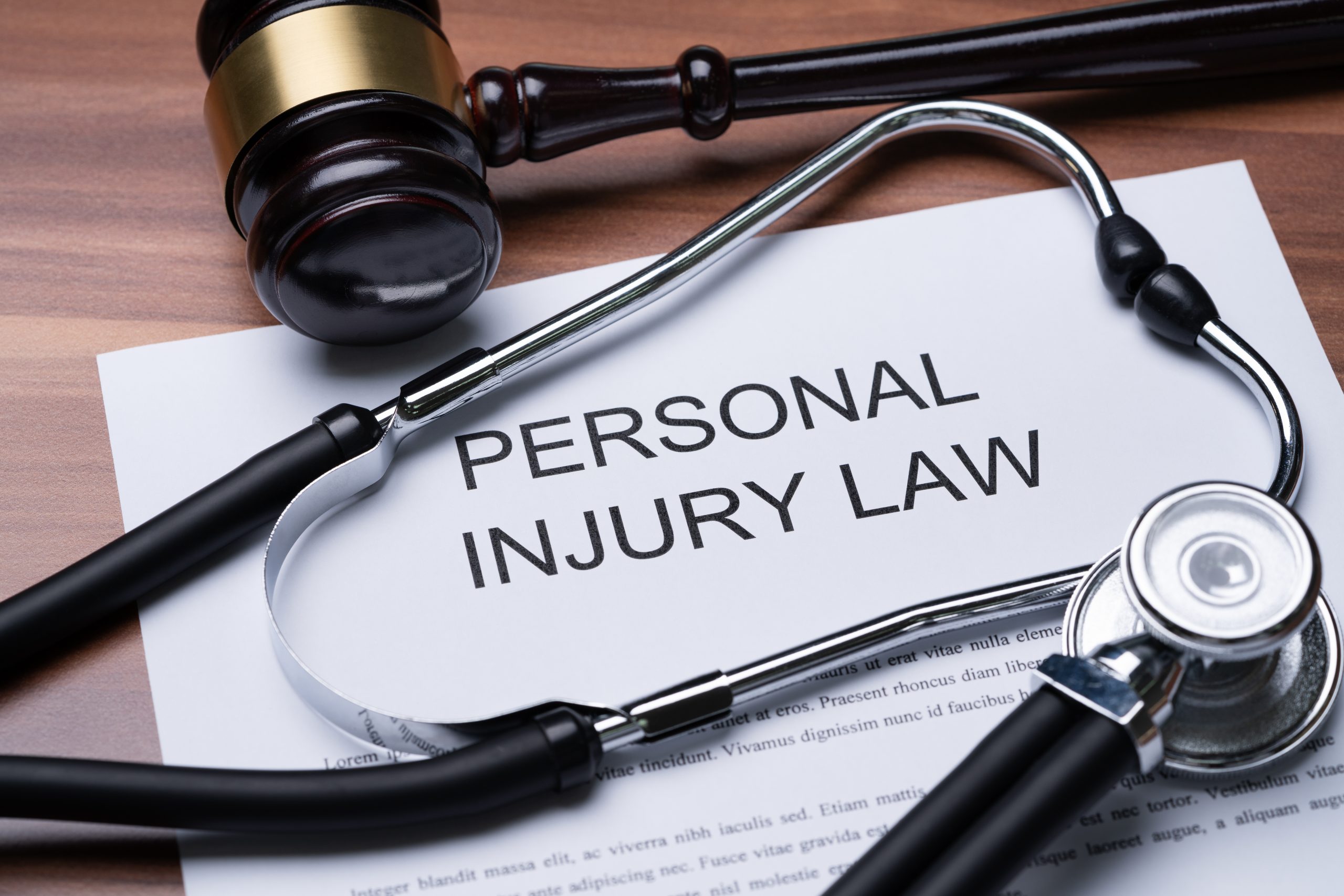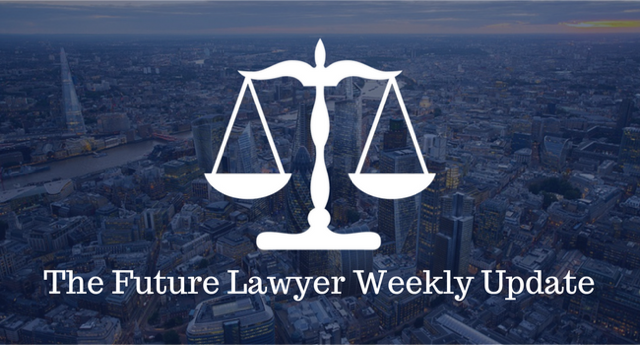
Court of Appeal Shows Support for Traveller Communities
April 14, 2020
Qualities Of A Personal Injury Lawyer You Should Always Remember
April 14, 2020The round-up of the stories that a budding Student Lawyer should be aware of this week. Sign up here to get these updates in your inbox every week.
One Year of Upskirting Offence
One year on since upskirting was made a criminal offence
Reported by Ellena Mottram
Upskirting was introduced as a criminal offence one year ago and in that time four men have been jailed. The offence was introduced on 12th April 2019 and figures show that 16 men have been convicted of 48 offences, the majority of which took place in supermarkets (33). The other offences took place on public transport, in the street and one which took place in a school.
Upskirting is defined as the taking of surreptitious, sexually intrusive photographs. An individual who is convicted could face up to two years in custody. The offence is also punishable with a fine or summary conviction. In the most serious cases those convicted can also be placed on the sex offender register.
The CPS national lead for sexual offences, Siobhan Blake said “It has now been a year since this degrading practice became a specific criminal offence, but women continue to be violated as they go about their daily lives.
“This appears to be a particular problem in shops and on public transport, where predatory men are concealing devices to take pictures up women’s skirts. Whilst the NSPCC praised the law as a ‘really good step forward’ in offering a route to justice and broadening an understanding of what sexual abuse is, they also highlighted greater education is still needed. Particularly, the education should focus on what amounts to abuse to help shape the behavior of young people.
Additionally, campaigners have called for more work to raise awareness of the offence, with some fearing some are not reporting incidents because they are not aware of the law.
Upskirting was introduced as a criminal offence under the Voyeurism (offenses) Act for England and Wales following a campaign by Gina Martin. Ms Martin was a victim of upskirting when a man took a photograph up her skirt and shared it with his friends. She was however told that nothing could be done because upskirting was not a crime and as she had been wearing underwear the photograph was not deemed illegal. Following this confirmation, Ms Martin, who was 26 at the time with no legal or political experience, lobbied the government for almost two years to make upskirting a specific offence.
Before the introduction of the offence victims had to seek prosecution under existing harassment, voyeurism or indecency laws but it was often difficult to secure a conviction. For example, another case involving the images of a 70-year-old woman ran into difficulties after the victim decline or was unable to identify the offender.
Upskirting and downblousing were already a criminal offence in Scotland following the introduction of a voyeurism offense under the Sexual Offences (Scotland) Act 2009.
Medical Law: COVID-19
Collaborative efforts to end COVID-19 (mainly talking about the Open Covid Pledge though)
Reported by Laurence Tsai
The COVID-19 pandemic has gripped the world as the death toll continues to rise globally. To reduce the spread of the pandemic and aid governments in improving contact-tracking, major tech companies have taken proactive steps to share their technology and intellectual property for the greater good.
Legal experts, leading scientists and tech companies have formed a coalition (‘the Pledgor’) with Creative Commons to create the Open Covid Pledge which will give broad permission to anyone to use the Pledgor’s patents, copyright and other intellectual property (‘IP’) rights for the sole purpose of ending the pandemic and minimizing the impact of the virus. Legal experts have prepared a model license to facilitate this objective and it will be in effect from 1 December 2019 until one year after the World Health Organisation declares the COVID-19 pandemic to have ended. A range of pledge participants have already signed the pledge, which includes Mozilla, Unified Patents, international law firm DLA Piper, various American universities and Intel.
Chief IP counsel at Unified Patents, Mr Jonathan Stroud, explained that pledge is intended to inspire as many companies as possible to share their technology to encourage much research and development as quickly as possible during the pandemic to find innovative solutions. The licence is drafted in such a way that companies can freely share their IP with the world without the fear that someone might utilise their technology for selfish motivations and make a profit. This unprecedented union is truly inspiring and it is hoped that other companies will be encouraged and incentivised to sign the pledge to reach the common goal of mitigating any further risks that the pandemic may bring.
There are various concerns surrounding the impact of the pledge. For instance, some argue that companies could generate a more meaningful impact in defeating COVID-19 if they committed their resources to treating and/or assisting in finding a vaccine or cure. Proponents for the pledge believe that this is an opportunity for scientists and researchers to have unfettered access to some of the most valuable patents and IP, thereby providing them with the freedom to make inventions without the threat of being party to IP litigation.
Although there are currently only a handful of companies who are willing to sign the pledge, several other efforts to share access to IP have been launched independently. Notable initiatives include Google, IBM, Microsoft and HPE joining forces with the US government research labs and academia to form the COVID-19 High-Performance Computing Consortium. AbbVie waived worldwide restrictions on manufacturing its HIV drug, Kaletra, as a treatment for COVID-19.
Google and Apple announced a historic collaboration between the two tech giants to use the Bluetooth chip in smartphones to track the spread of COVID-19 by establishing a contact-tracing network, which will keep extensive data on phones that have been in close proximity with each other. Apps launched by public health authorities can access and utilise this data, and users those apps can report if they have been diagnosed with COVID-19. One major concern to the the new system is that this is a voluntary process, so it will rely on individuals downloading the app and informing public health authorities that they have contracted COVID-19.
You can find more here or here.
Human Rights
Chinese human rights lawyer freed 400km from home for “quarantine purposes”
Reported by Emma Ducroix
Prominent Chinese human rights lawyer Wang Quanzhang, has been released from prison but barred from reuniting with his wife and son in Beijing amid the coronavirus pandemic.
Wang, who was jailed for four and a half years for subversion, had taken on politically sensitive cases and defended activists and members of the banned religious group Falun Gong, was sentenced to jail in January 2019 on the blanket charge of “subversion of state power”.
He was one of more than 300 lawyers and activists detained in a wave of crackdowns that started in July 2015. He was the last lawyer of the group to be convicted, with his trial taking place three-and-a-half years after he was taken away by the authorities.
His wife, Li Wenzu, said Wang has been released from prison but authorities had sent him to his home town, Jinan (400km south of Beijing), for quarantine. But she fears that the authorities are using the pandemic as an excuse to hold him under de facto house arrest indefinitely.
Chinese authorities have been using compulsory quarantine as a pretext to detain or restrict the movements of government critics. “The government is continuing to restrict his personal freedoms and forcing us to be separated,” Li told the Guardian. “This behaviour is shameless, I’m absolutely opposed to this and am very angry.
“I fear the government is using the pandemic as an excuse to detain him. Would it be just 14 days as they say? I can’t trust them. So long as my husband has no freedom, I’ll continue to fight until he comes back.”
Wang called his wife from the prison yesterday telling her to refrain from going to meet him in prison. In a recording she posted on Twitter, Wang said he had to be quarantined “for some time” due to the pandemic.
“The Linyi prison… forced Quanzhang to ‘persuade’ me into accepting the arrangement of sending him to Jinan. I absolutely oppose it,” Li said on Twitter: “Wang Quanzhang needs real freedom, our family needs to be reunited.”
In a practice dubbed “non-release release” by respected China law expert Jerome Cohen at the New York University, Chinese rights activists are often released from prison into de facto house arrest or enforced restriction to their native village, where they remain for years.
Find out more here.
Case Law: Historic Child Abuse
Pell v The Queen [2020] HCA 12
Reported by Jimmy Johnson
On 7th April 2020 the High Court of Australia, the country’s highest court, quashed the conviction of Cardinal George Pell for historical child sexual abuse. He had spent 13 months in jail and was freed immediately.
Pell was Australia’s most powerful Catholic when Archbishop of Sydney and the third most senior person in the church hierarchy when prefect of the Secretariat for the Economy, the Vatican Treasurer.
He was convicted on 11th December 2018 after trial at the County Court of Victoria on one charge of sexual penetration of a child under 16 and four charges of committing an act of indecency with or in the presence of a child under 16. These acts were allegedly committed against two 13-year-old choir boys (A and B) between 1 July 1996 and 28 February 1997 within the St Patrick’s Cathedral, East Melbourne, following the celebration of Sunday solemn Mass when he was Archbishop of Melbourne.
The evidence against the Cardinal was wholly dependent upon acceptance of the truthfulness and reliability of A’s evidence; A made his complaint in June 2015 a while after B died of a heroin overdose. There were also numerous ‘opportunity witnesses’ who were involved in the conduct of solemn Mass at the Cathedral or in the choir at the relevant time. The Cardinal’s ground for appeal to the High Court was that the jury’s verdict was unreasonable or could not be supported having regard to the whole of the evidence. The controversy was whether the opportunity witnesses’ evidence – which was inconsistent with A’s account – ought to have caused the jury, acting rationally, to entertain a doubt as to the Cardinal’s guilt.
The majority (2/3) of the Supreme Court of Victoria thought A to be a compelling and credible witness ‘because of the clarity and cogency of his answers and because of the absence of any indication of contrivance in the emotion he conveyed in giving his answers.’ They believed the inconsistencies which the opportunity witnesses’ evidence created were not enough to hold the verdict unreasonable and upheld it. The judge dissenting said that because of the opportunity witnesses’ evidence ‘the odds against A’s account of how the abuse had occurred would have to be substantial.’
The High Court said there was ‘a significant possibility that an innocent person has been convicted because the evidence did not establish guilt to the requisite standard of proof.’
A’s evidence was that, (1) following the Sunday solemn Mass, he and B broke away from the procession and wandered around the Cathedral, ending up in the priests’ sacristy. As they were swigging from a bottle of red altar wine they had found in a cupboard Pell appeared in the doorway, and the sexual assault ensued, lasting around 3-4 minutes. (2) Another incident, around a month later, was when Pell pushed A against a wall and sexually assaulted him in a hallway of the Cathedral.
The Cardinal’s defense consisted of a number of arguments: The first was that he ‘experienced a significant forensic disadvantage in being confronted with allegations of criminal offending more than 20 years after the events were said to have occurred.’ The delay meant (I) he had lost the opportunity of making inquiries and exploring the alleged circumstances close to the time of the alleged events, which may have uncovered additional evidence throwing doubt on A’s allegations or supporting Pell’s denials. (II) Most of the opportunity witnesses could only give evidence of practice or routine whereas, had the trial been held on a date closer to 1996, more might have had specific recall of the subject events. (III) The passing of more than 20 years meant some witnesses no longer presented the lucid and coherent evidence of younger men. (IV) People who could have provided very helpful evidence were no longer around – for example, the Dean of the Cathedral in 1996 whose evidence would have been material on the issue of Pell’s movements after Mass was in a nursing home and incapable of giving reliable evidence. (V) The passage of time diminished the capacity for the defense to fully test A’s evidence. (VI) B would have been a material witness.
The second was that opportunity witnesses placed Pell invariably on the steps of the Cathedral, greeting congregants as they left Mass for at least ten minutes – so he couldn’t have been in the priests’ sacristy when A claimed. The jury was asked to believe that, contrary to Pell’s practice, he did not stand on the steps of the Cathedral greeting congregants for ten minutes or longer.
The third was that A claimed Pell appeared in the doorway wearing his sacred robes. But Monsignor Portelli, master of ceremonies at the Cathedral, and Maxwell Potter, a sacristan, testified that the ‘Archbishop could never be left alone in the Cathedral and at least not during the course of ceremonies, that the ceremony continued until the archbishop removed his vestments. The vestments themselves are sacred, and particular prayers are said when donning and removing them.’ It was centuries-old Church rules that Pell could not be unaccompanied in the Cathedral especially when wearing the sacred robes – ensuring this was one of Portelli and Potter’s duties. A ‘defining feature of religious observance is adherence to ritual and compliance with established practice.’ Thus, the jury was asked to believe that contrary to long-standing church practice, Pell returned on his own to the priests’ sacristy in his ceremonial vestments. Further, witnesses stated that Pell was ‘a stickler for protocol and conservative in terms of church liturgy and tradition.’ There were, however, four witnesses who said they had seen Pell on other occasions robed and alone, and no opportunity witness could say with certainty that the routines and practices were never departed from.
The fourth was that the priests’ sacristy was a ‘hive of activity’ after Mass. It would have been extremely reckless of Pell to do what he did, and even if so, he would not have gotten away with it because people would have been everywhere.
The fifth was the argument that the doors to the priests’ sacristy would have been locked. The sixth was was that the sacramental wine was always locked away and could not have been accessible. The seventh was that two choirboys could not have separated from the procession unnoticed. The eighth was the compounding of these improbabilities.
There were two further disputes. First, the Supreme Court of Victoria majority believed A’s knowledge of the interior layout of the priests’ sacristy considerably enhanced the credibility of his account. Moreover, the fact that A said the assaults took place in the priests’ sacristy rather than the archbishop’s, which Pell would have used, was more striking. However, this was opposed by the possibility of a tour of the Cathedral given to A when he joined the choir. There are also the logical objections: just because A had been inside the priests’ sacristy or identified it as the place where the events occurred does not verify the assault. Second, regarding the second incident. The defence argued that the notion that Pell in his full regalia might assault a choirboy in the presence of a number of people bordered on the fanciful. The sight of the Archbishop would have attracted attention. However, the SCV majority thought that those in the corridors might not have noticed because they were preoccupied and intent on completing the procession and removing their robes as soon as possible.
A has since said that he accepts the ruling and understands it. He said ‘I understand why criminal cases must be proven beyond all reasonable doubt. No one wants to live in a society where people can be imprisoned without due and proper process. This is a basic civil liberty.’



